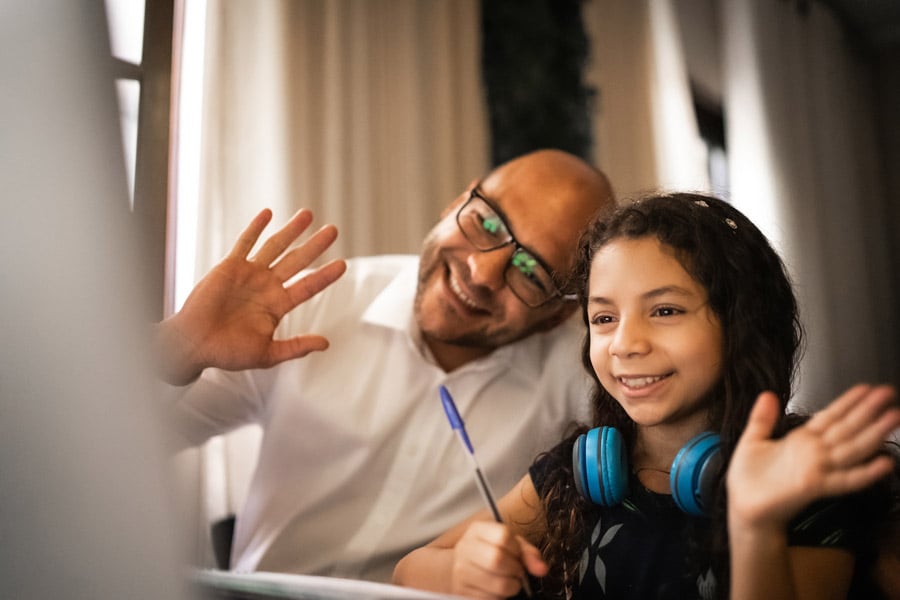TOOLKIT
Team up with Families to Accelerate Learning

Communicating with Families
Personal, two-way communication is the best way to build a strong partnership with families to support student growth, but if it’s the only way you are communicating with families it can be hard to maintain and even harder to make sure you’re reaching everyone. That’s why it’s helpful to use a variety of communication tools and strategies, including some that are high-level (email blasts, newsletters, social media), and some that are personalized (messages, notes, phone calls).
- Learn More: How Two-Way Communication Can Boost Parent Engagement [Waterford]
- Resource: Newsletter Template
- Family Playlist Connection: Using Family Playlists to Strengthen Communication
Create A System
If there isn’t a plan for it, communicating with families is something that can fall through the cracks. Having a system in place for tracking which families you have communicated with recently can help ensure that you are reaching everyone on a regular basis.
- Resource: Call Log Template [Tech Coaches]
Building Trust with Families
Show Families that You Value Their Partnership
It can take time to build trust with families; asking genuine questions to get to know families and their perspective on their children’s education can be a way to accelerate that important trust-building process. Through surveys or in-person conferences, try asking families to share their hopes and dreams for their children, as well as information on their children’s strengths, needs, and learning differences.
- Learn More: Families’ Hopes and Dreams [Responsive Classroom]
Spend Time in the Community
Especially if you are teaching in a neighborhood where you don’t live, spending time in the community is a great way to connect with families. You can do some of your shopping at the local grocery store, visit the local park, or attend school and community events—whether or not you bump into students and families you will begin to develop an appreciation for the community and find points of connection.
- Learn More: “Some educators spend little extra time in the communities where they teach. Doing so can pay real dividends.” [Chalkbeat]
- Family Playlist Connection: Building a Community Network with Family Playlists
Gathering Data from Families
Get Some Baseline Information
We often begin the year with access to students’ academic data, but it can take longer to learn about the nuances of students’ interests, social emotional needs, and lives outside of the classroom. Asking families what their children enjoy learning about, who they learn with, and how and where they access information outside of the classroom can help us tailor instruction to better engage students and meet their needs.
Check In About Home Learning
Often homework gets sent home, completed and returned without any dialogue around what is and isn’t working (beyond whether or not students are completing it). You can make homework more meaningful by getting by feedback from families about how and when students are doing homework, what they are struggling with, and what questions families have about providing students with support.
- Resource: Family Homework Survey
- Family Playlist Connection: Using Family Playlist Reports to Gather Data
Sharing Data with Families
Put Data in Context
Families may see student data regularly, but they may not know what a level P in reading is or understand what it means to have mastered counting on from ten. Use data and student work samples to show families how their children are progressing throughout the year relative to grade-level standards and expected growth.
- Resource: Student Portfolio and Family Reflection Sheet - English | Spanish
- Resource: Learning about the Standards [National Center for Families Learning]
- Family Playlist Connection: Using Family Playlists and Work Samples to Enhance Conferences
Support Progress Monitoring
Most families have access to their student’s online gradebook, but they may not have a deep understanding of how to use it. Consider providing families with guidance on how to look at grades with their child and how to have conversations about goals and progress with them.